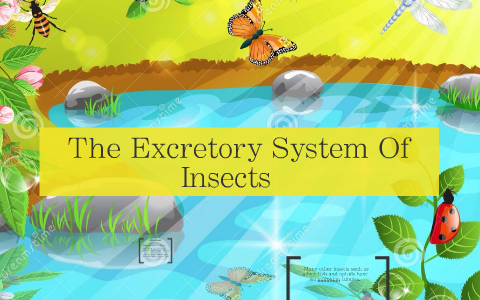Excretory System Of Insects
Excretory system of insects. The Journal of Experimental Biology. Insects have a slowly operating excretory system in which the passive rate of movement of haemolymph solutes into a slowly secreted primary excretory fluid is restricted by a reduction in the area available for passive transfer. Insect digestive and excretory systems.
Insects have a slowly operating excretory system in which the passive rate of movement of haemolymph solutes into a slowly secreted primary excretory fluid is restricted by a. FUNCTIONS OF THE EXCRETORY SYSTEM IN INSECTS Maintain a nearly constant internal HOMEOSTASIS osmotic environment of the hemolymph tissues and cell environment by. The study of insect physiology is usually divided into a systems approach.
Some insects have evolved Malpighian tubules to excrete wastes and maintain osmotic balance. Various reabsorptive functions su. 1Elimination of excretory products 2Reabsorption of water from the.
At the end of each blind tubule of the nephridium is a ciliated flame cell. However in fresh water insects haemolymph composition is regulated in response to loss of ions to the surrounding water with the help of excretory system and special cells. Malpighian tubules These are the main excretory organs in insects.
Insect physiology is the study of how insects live and reproduce. The malpighian tubules are bathed in the insects blood but since they are not rigid it is impossible for any hydrostatic pressure to be developed across their. Prawns have antennal glands or green glands.
The Excretory System The system responsible for excretion and osmoregulation is referred to loosely as the excretory system. Insect digestive and excretory systems - YouTube. If playback doesnt begin shortly try restarting your device.
Insects may have one to hundreds of Malpighian tubules element 20. The diverse excretory systems of insects exhibit several features that appear unusual when comparisons are made with the mammalian kidney.
These tubules remove nitrogenous wastes from the hemolymph of the insect and regulate osmotic balance.
The simplest system is that of contractile vacuoles present in microorganisms. Prawns have antennal glands or green glands. These systems are the same required by all animals. The insect excretory system therefore comprises the malpighian tubules and the rectum acting together. Digestive excretory circulatory immune muscular nervous and reproductive. The diverse excretory systems of insects exhibit several features that appear unusual when comparisons are made with the mammalian kidney. Digestive and Excretory Systems. The system responsible for excretion and osmoregulation is referred to as excretory system and its activities are performed largely by the Malpighian tubules and hindgut. Flame cells in planaria.
The cells in the tubules are called flame cells or protonephridia because they have a cluster of cilia that looks like a flickering flame when viewed under the microscope as illustrated in Figure 2a. Various reabsorptive functions su. Secretion by the Malpighian tubules of a fluid that is unlike the blood in composition substitutes for glomerular filtration. Insects have a slowly operating excretory system in which the passive rate of movement of haemolymph solutes into a slowly secreted primary excretory fluid is restricted by a. Its activities are performed largely by the Malpighian tubules and hindgut. The Malpighian tubule system is a type of excretory and osmoregulatory system found in some insects myriapods arachnids and tardigrades. Excretory system of a flatworm.


















:max_bytes(150000):strip_icc()/excretorysystem-56a51ed65f9b58b7d0dae789.jpg)




















Post a Comment for "Excretory System Of Insects"